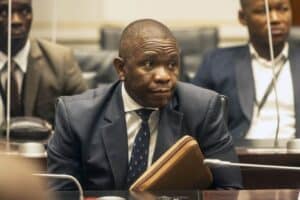The science behind the lockdown says South Africa may have done better than a whole host of First World countries with better economic resources.

There is a Setswana saying that goes “Ke kgomo ya moshata, wa e gapa o molato, wa e lesa o molato”, loosely translated as “damned if you do, damned if you don’t.”
As the country goes hurtling down to Lockdown Level 3, this is the exact position that President Cyril Ramaphosa and his government find themselves in. There is nothing right that they can possibly do in the eyes of the greater majority of the citizens. And opposition parties are not letting them off the hook.
The Economic Freedom Fighters’ Mbuyiseni Ndlozi has been the most brutal on social media, harking back to the president’s murky involvement in the Marikana massacre, with the suggestion that the decision to open up the economy is tantamount to sending people to slaughter. Ndlozi’s under-the-belt shots go as low as suggesting that the country’s lockdown was designed to “benefit white people”.
It doesn’t help that government continues to shoot itself in the foot through hugely embarrassing pussyfooting around the opening of schools or the annoying hair-splitting enforcement of the tobacco ban. Even the currently unattached Mmusi Maimane has found openings to throw punches at Basic Education Minister Angie Motshega’s last-minute cancelling of a press conference, calling it the “highest level of disrespect, disgraceful and disorganised.”
But is all this criticism justified? Should it turn out that more people die (than currently projected) due to the opening up of the economy will the president have wilfully sent thousands of South Africans to their deaths? Is there anything more that the government could have done and chose not to?
At this point it is very helpful to revisit the basic aim of the lockdown and the scientific reasoning behind its implementation. Like most viruses, Covid-19 spread is exponential in nature, always doubling if there is no intervention. Mathematically, if there had been no lockdown, the number of infected people in South Africa would be in the millions by now. That is a scientific fact. The number of recorded infections right now is about 30,000, with even fever active cases.
The lockdown kept those numbers low. The most important part of the lockdown, besides slowing down the infection rate (flattening the curve) was to buy government time in trying to prepare for the inevitable: high numbers of infected people seeking hospital beds with ventilators at the same time. Those preparations have been done based on the scientific projections that scientists working with government have provided. In other words, the lockdown achieved its two main aims.
The last question that needs to be answered before deciding if Ramaphosa and his government have led the nation to a massacre is: could the government have done more? In other words, could they have kept the total lockdown for longer than they did? Any South African that knows the conditions of those living from hand-to-mouth knows the only answer to that question is a definite no.
People who live on daily earnings are a substantial part of this country’s economy and a strict business-prohibitive lockdown longer than the current 60 days plus would have been inhumane, unsustainable and, in the long run, deadly. It would achieve exactly what Julius Malema and Mbuyiseni Ndlozi believe was going to happen over the next couple of months. Citizens would clash with the police in a highly volatile atmosphere resulting in tragic deaths.
The science says the South African government did well.
In fact, the science behind the lockdown says South Africa may have done better than a whole host of First World countries with better economic resources.
Sydney Majoko.
For more news your way, download The Citizen’s app for iOS and Android.






